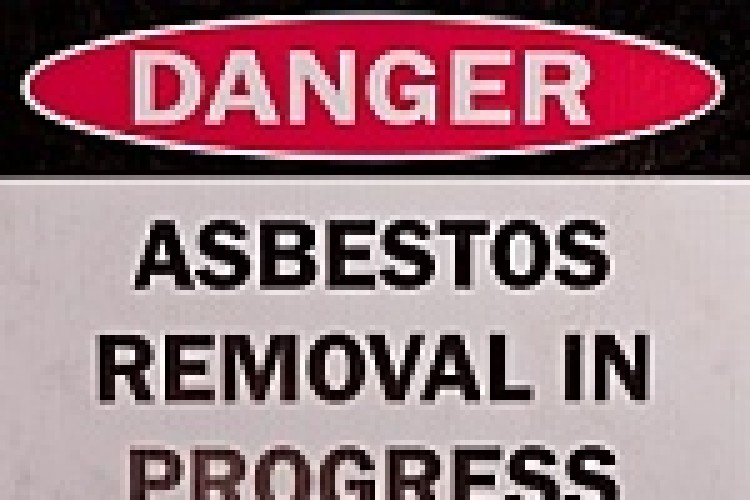Socotec’s operations director Paul Tilley, answers some of the most frequently asked questions
What type of asbestos might be in the ground and how do I recognise it?
The most common source of asbestos in the ground is the historical burying of demolition materials, so all forms of asbestos-containing materials (ACM) used in buildings may be present. By far the most common are pieces of asbestos cement sheeting, asbestos insulating board and asbestos lagging.
Less obvious ACM materials can be coatings such as Artex, some types of floor tiles, paper, felt and cardboard.
Quite often, no ACM can be seen in the made ground on site, but laboratory testing of samples might still detect significant amounts of free asbestos fibres that are invisible to the naked eye.
What are the risks from asbestos in the ground?
The most common asbestos-related illness is lung cancer in various forms. Symptoms might only become apparent many years after exposure, but asbestos kills more people than any other work-related illness. Asbestos only presents a risk to health if the fibres are inhaled. Hence buried asbestos presents very little risk to health if left undisturbed whereas ACMs pose a serious risk when moving material by machine, or processing it with techniques such as crushing and screening in dry and dusty conditions.
How do I know if there is a risk of asbestos contamination on site?
Some contaminated land reports either do not assess asbestos at all, or may include analysis for the presence of asbestos but not complete advice on managing the risks. The limitations of such reports are normally stated.
Due to the significant health risks, employers have additional legal responsibilities, over and above other health and safety law, towards employees who are potentially working with asbestos. The overarching legislation applied is the Control of Asbestos Regulations 2012 (CAR 2012). The HSE has produced an Approved Code of Practice (ACoP) for working with asbestos.
In 2016 the Joint Industry Working Group on Asbestos in Soil and Construction & Demolition Materials, in partnership with contaminated land regeneration body CL:AIRE, published a guidance document known as CAR-SOIL which provides a definitive explanation of how the legal requirements within CAR 2012 have been interpreted to apply to those working with asbestos-contaminated soil.
What activities on site give rise to the highest risk?
Any disturbance of ACMs and asbestos-containing soils will present a risk, but the extent of the dangers posed can vary significantly based on what materials are being disturbed and the level of disturbance. As a rule of thumb, the more degraded and friable the ACM and the more aggressive the site handling (e.g. crushing, screening, riddling, tipping, piling and soil mixing), the more risk there is of fibres becoming airborne.
How do I manage the risks?
The main elements of risk management should include:
• A proper understanding of the potential for asbestos contamination, usually via site investigation
• A fully developed risk assessment and management plan to set out the dangers and control measures required in specific areas of the site and by specific personnel
• Site zoning, restricting access and setting higher level control measures in higher risk areas
• An understanding of any legal duty to notify the HSE and/or procure a licensed subcontractor

• Dust control measures and air monitoring for reassurance and control purposes
• An effective method of quickly identifying potential ACMs during excavations
• Good site hygiene by all staff
• Provision of relevant PPE, together with appropriate training and fitting
• Effective training of all staff in works where they might encounter ACMs
• Contingency plans for dealing with larger volumes of ACMs should they be encountered
• Ongoing testing of materials and correct classification of waste
Must ALL ACM be disposed of off-site?
Many development projects on brownfield sites are carried out in accordance with an approved site-specific remediation strategy, which allows some contaminated materials to be reused or retained on site in locations that will not present a risk in the long-term. This often means that ACMs will be retained on site beneath a clean cover system or hard surface.
Do I have to inform the HSE or anybody else?
Work with asbestos generally falls under one of three categories, assessed as part of the Asbestos Management Plan: non-licensed work, notifiable non-licensed work and licensed work. The latter two require the HSE to be notified at least 14 days in advance of the works.
All notifiable activities will also require the relevant staff to undergo medical examinations.
It is a good idea to keep neighbouring sites, the local authority, clients and other stakeholders well informed of any scheduled works. On brownfield sites, the local authority is likely to have imposed contaminated land planning conditions and other stipulations, so they might also be required to formally approve the plans prior to commencement.
If excavated material is to be reused on site, a materials management plan will be compulsory, requiring notifications to the Environment Agency and other bodies.
• Download the CAR-SOIL document:
www.claire.co.uk/component/phocadownload/category/36-asbestos-in-soil
This article was first published in the October 2019 issue of The Construction Index magazine (magazine published online, 25th of each month.)
UK readers can have their own copy of the magazine, in real paper, posted through their letterbox each month by taking out an annual subscription for just £50 a year. Click for details.
Got a story? Email news@theconstructionindex.co.uk



